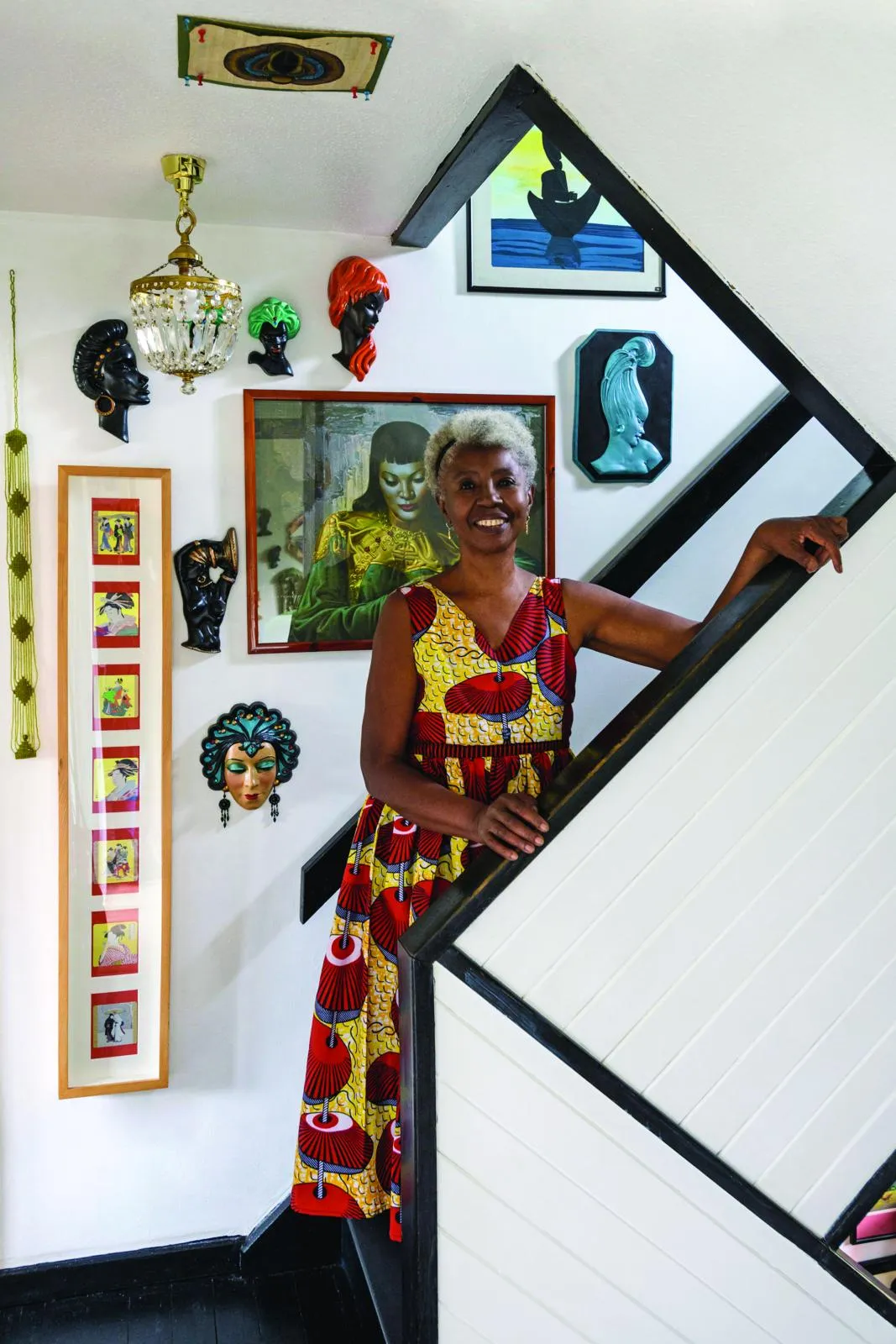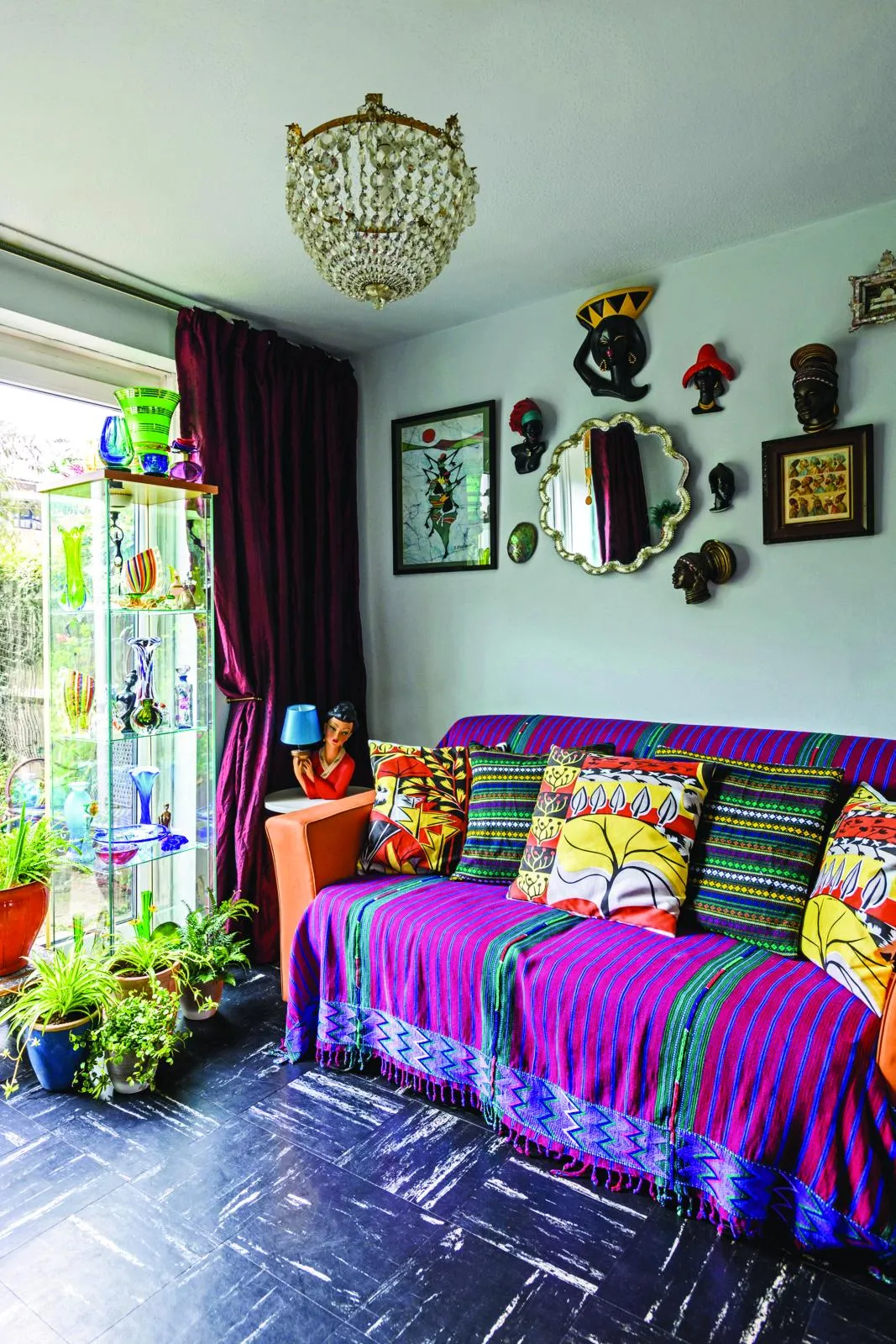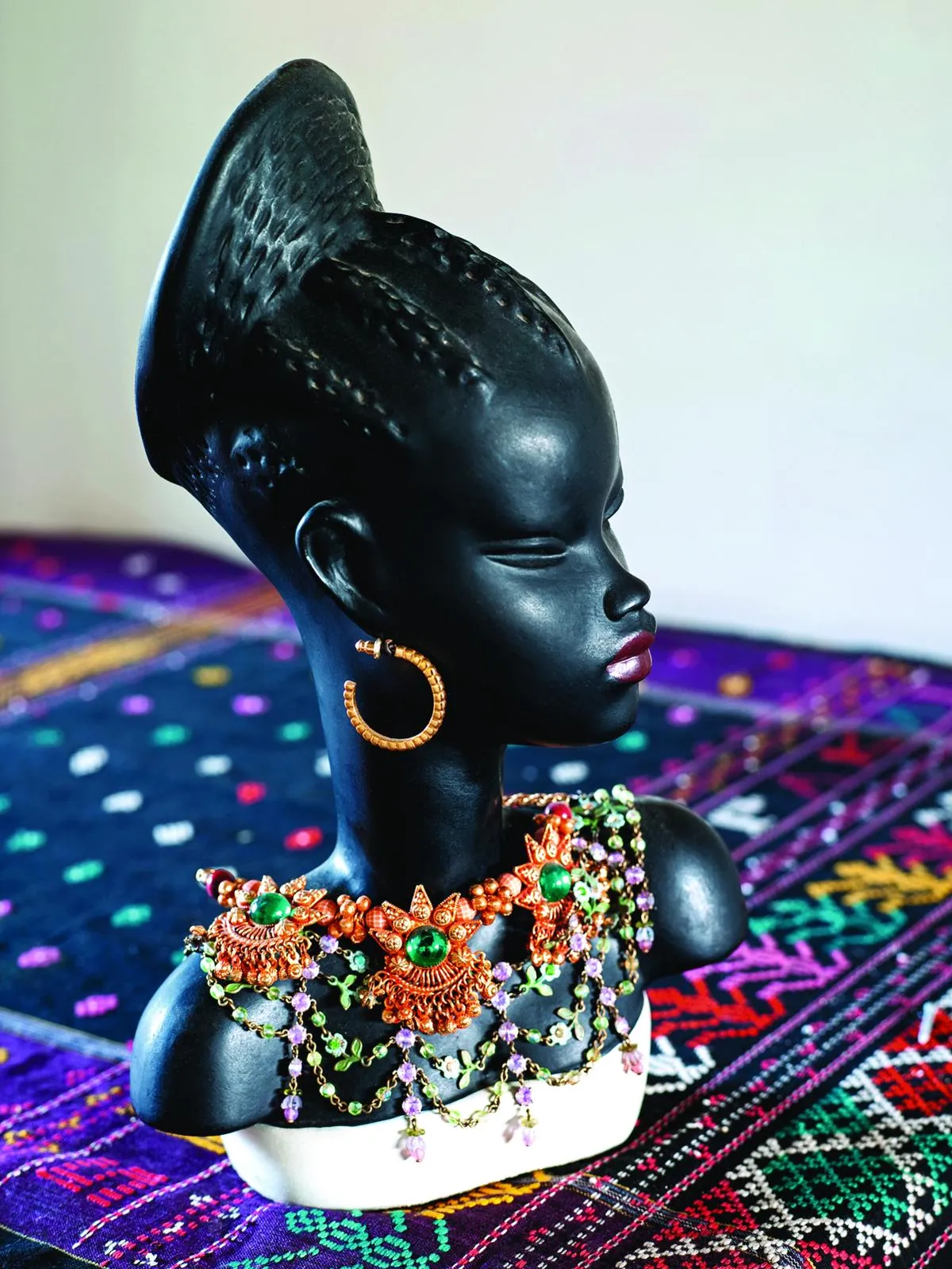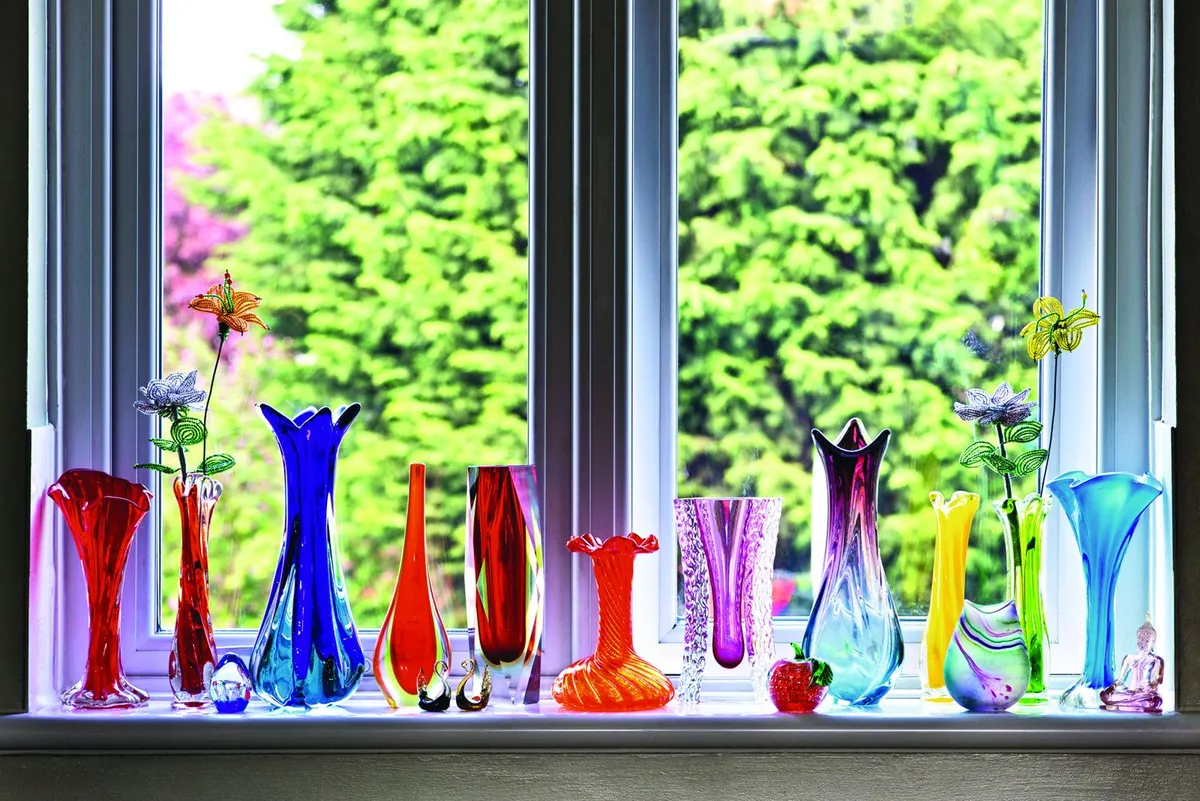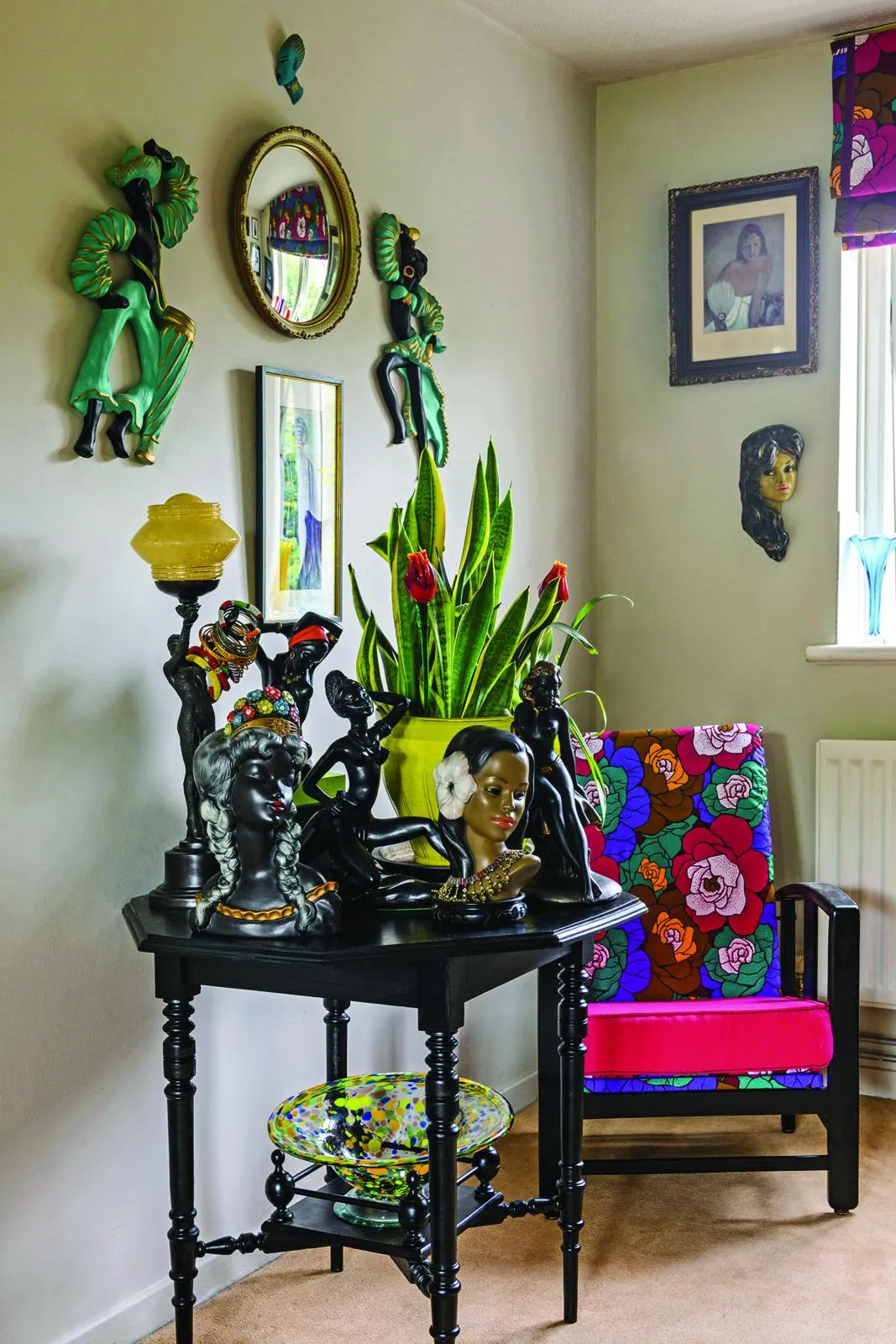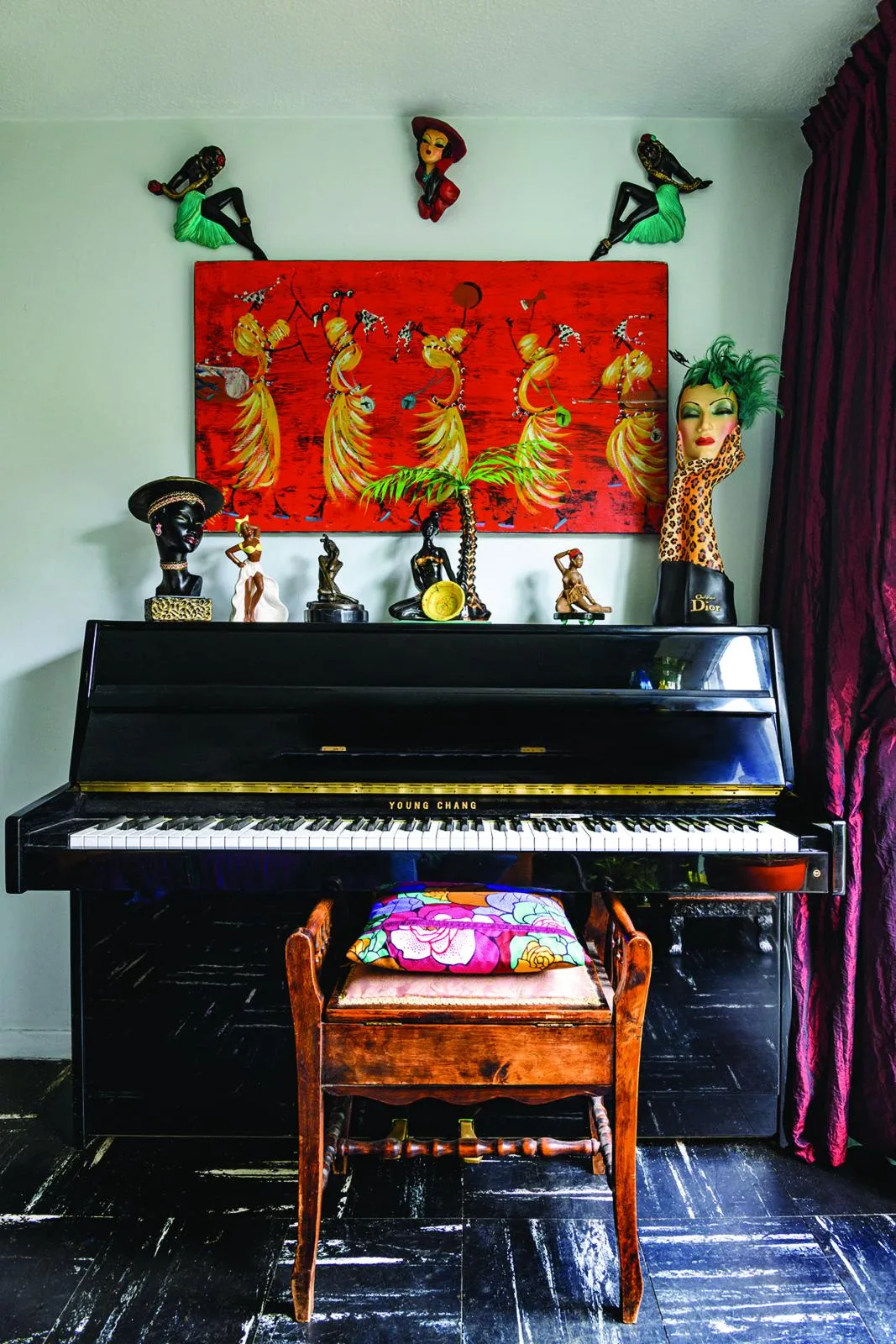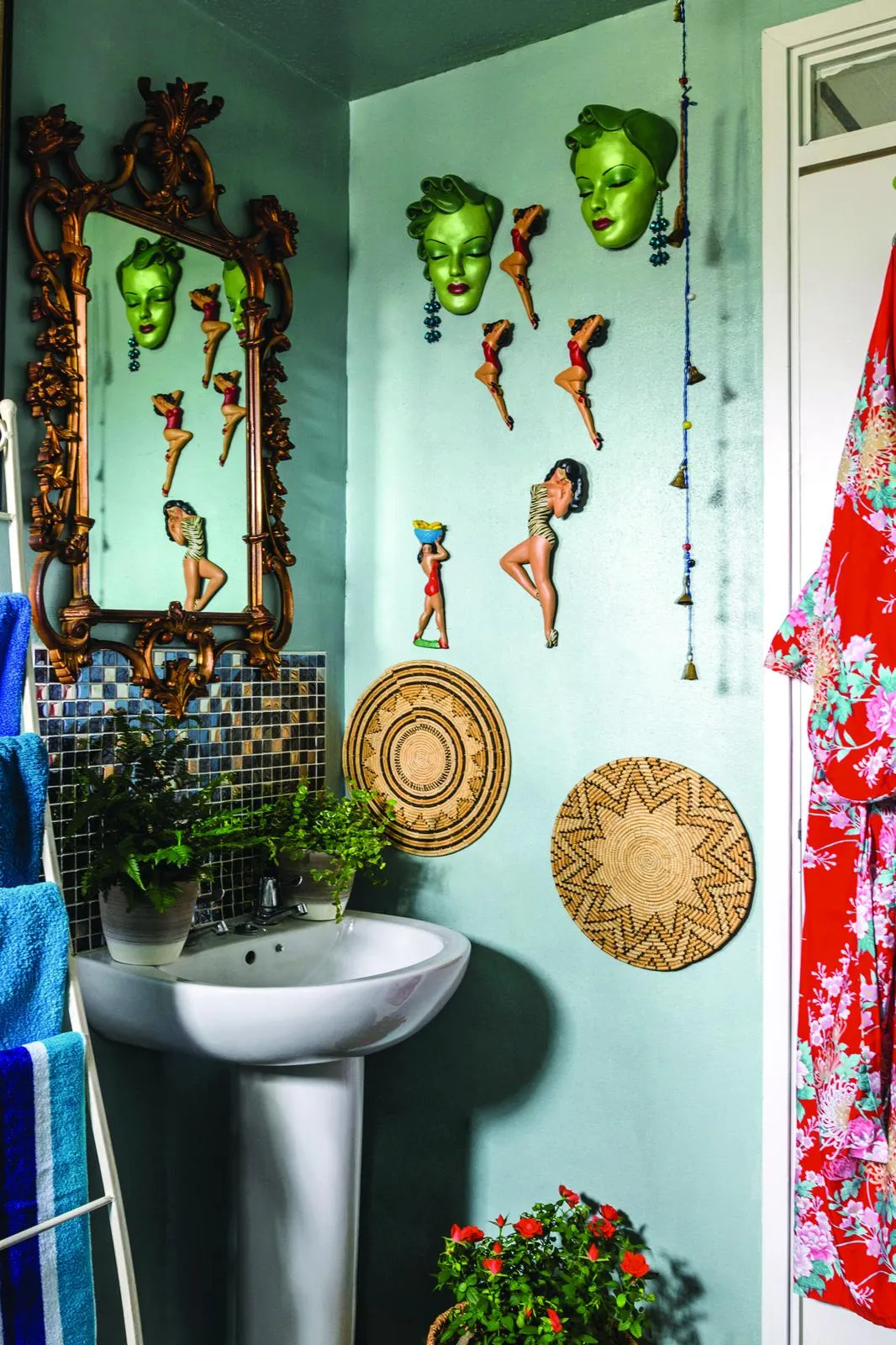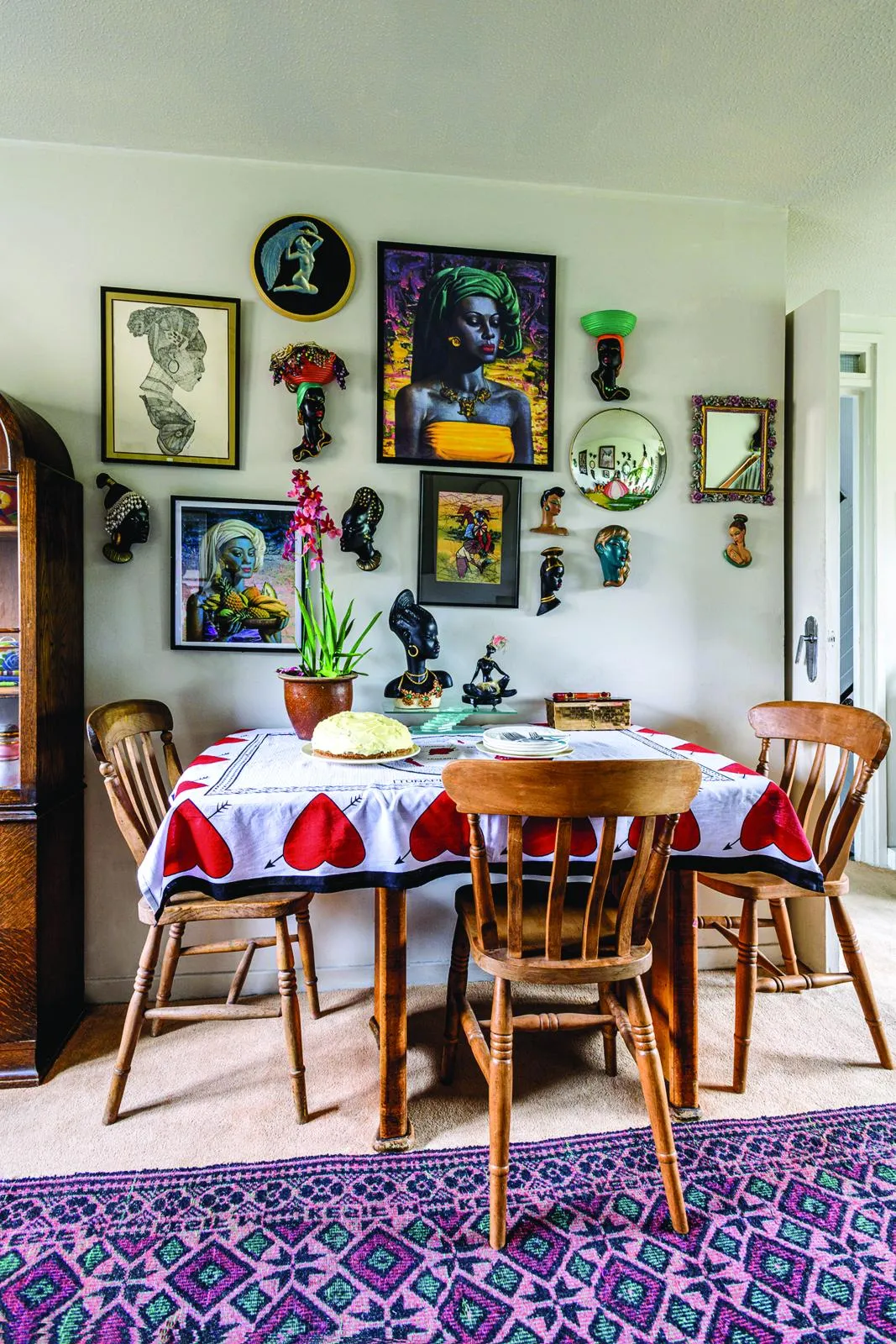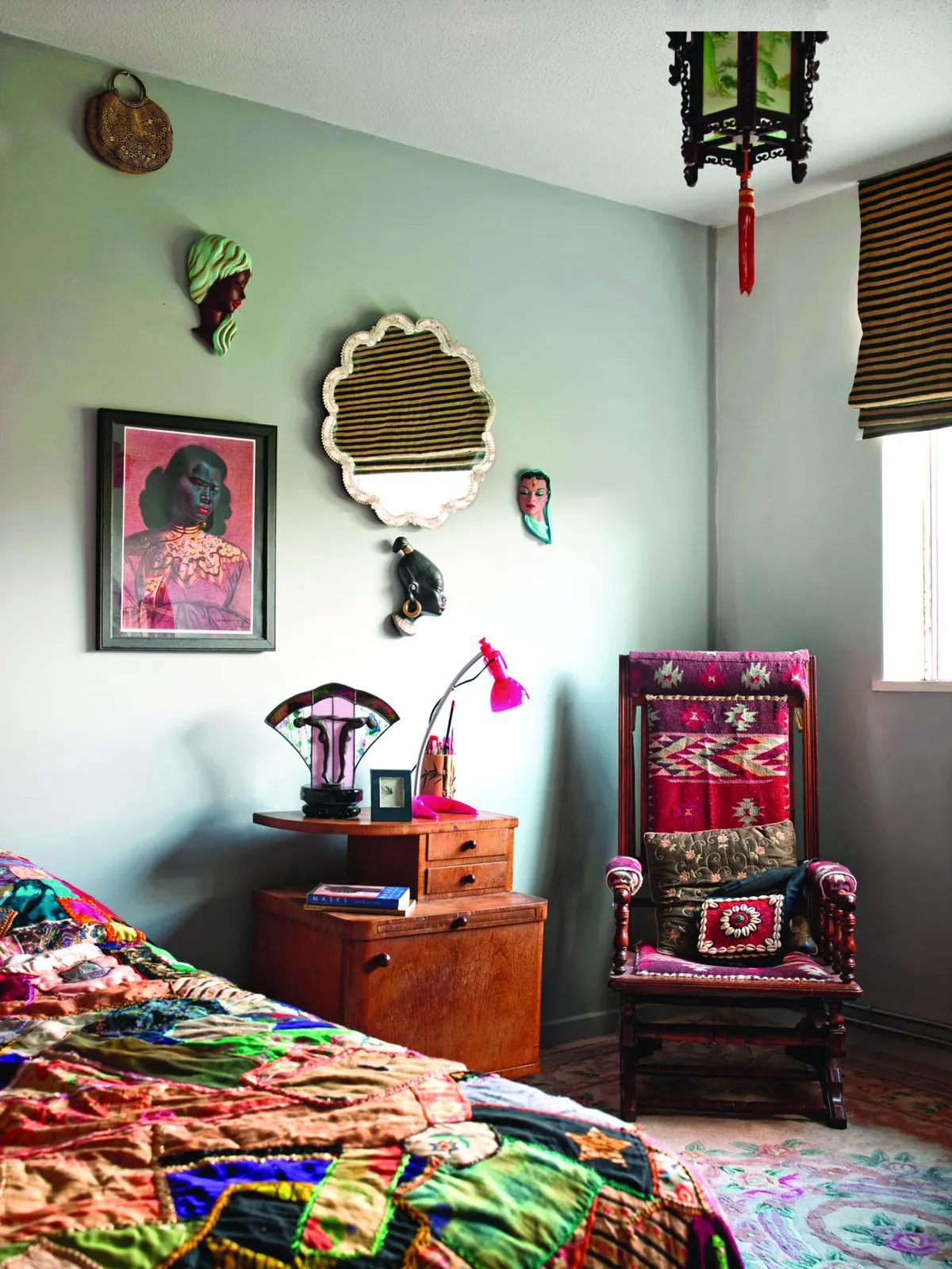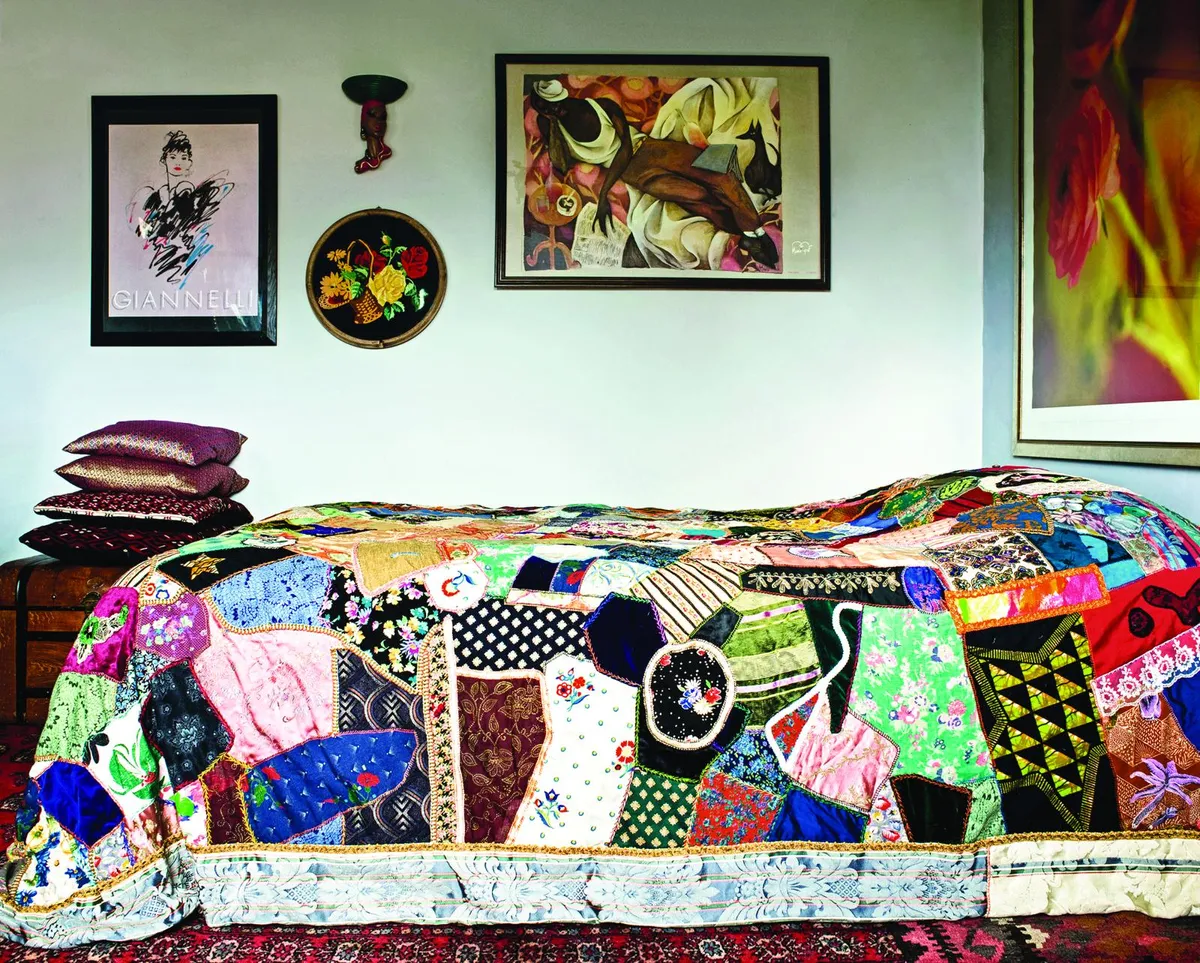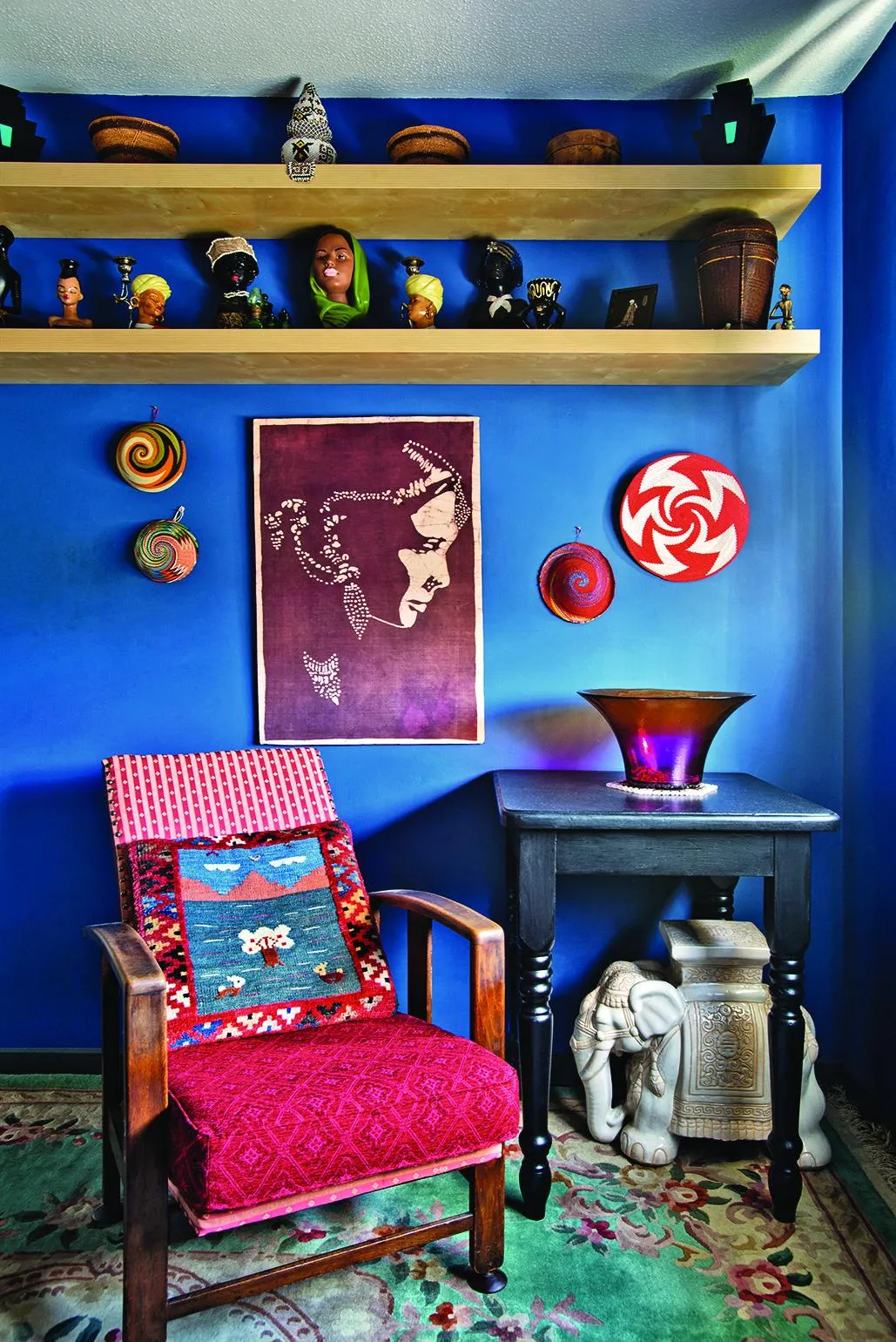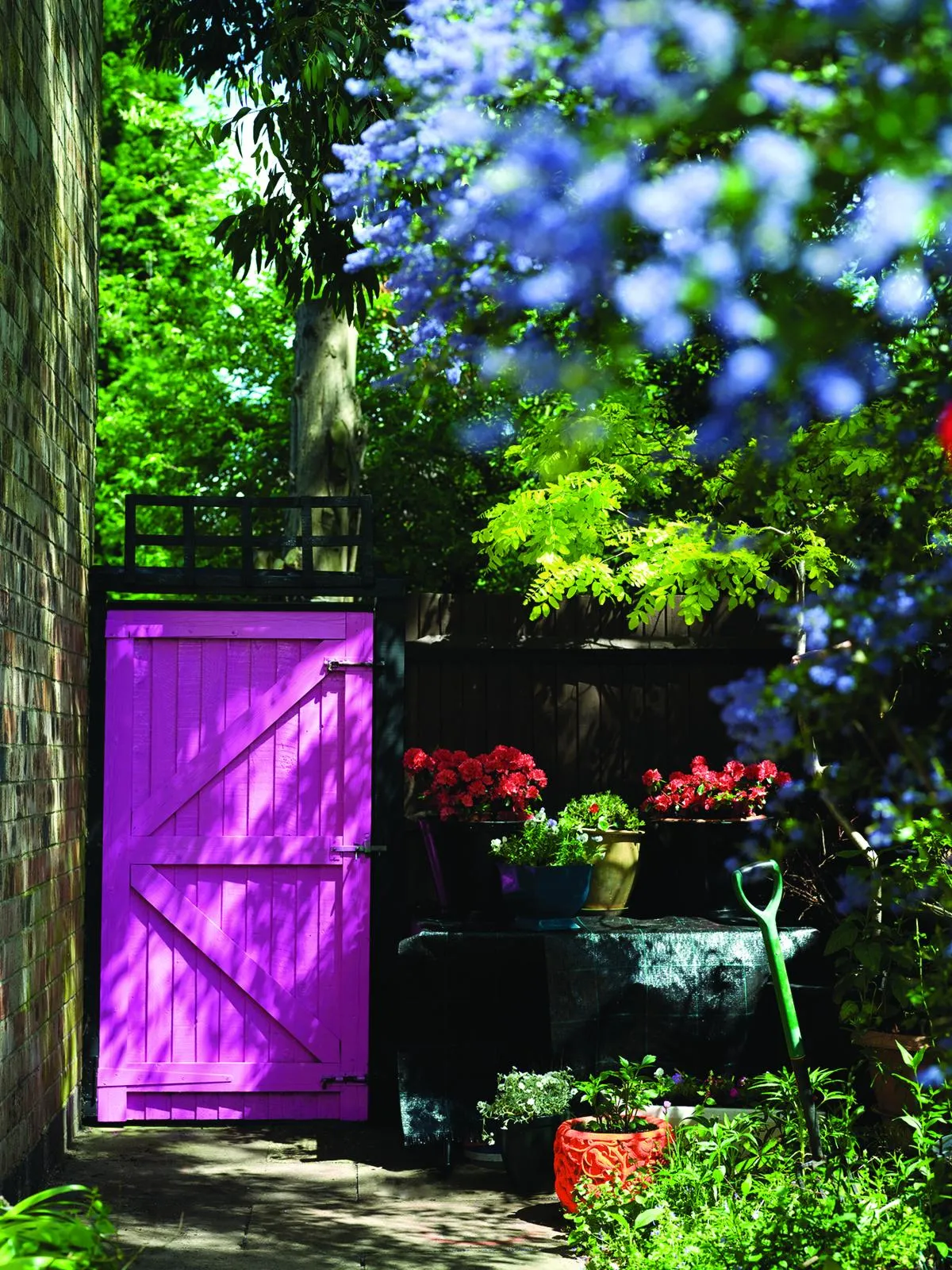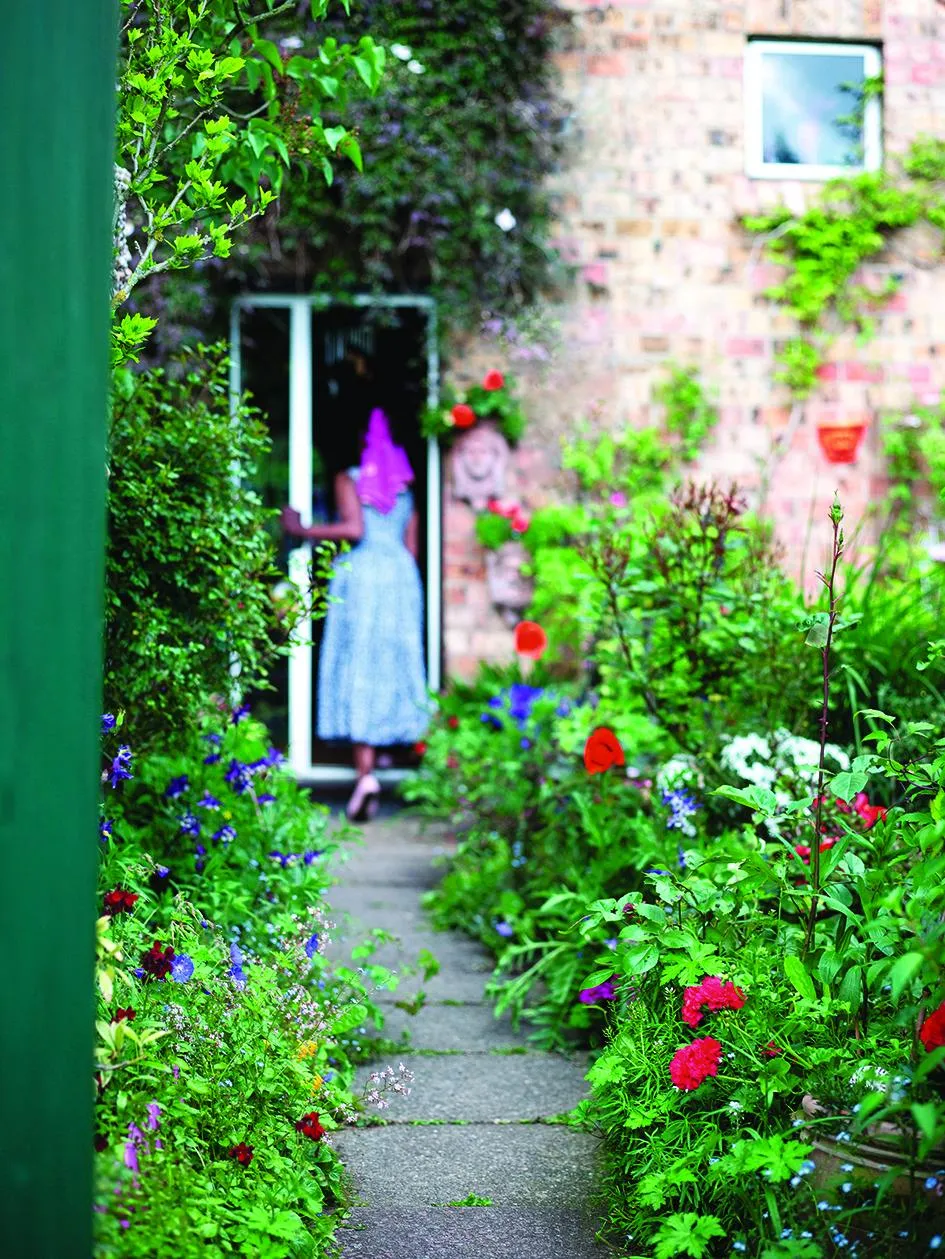Although Pamela Nestor lives alone, she is never short of company. The walls of her north London home are alive with vintage chalkware plaques, mostly of African heads, and tables and window sills are filled with freestanding statues and busts.
Pamela has been collecting these expressive heads and figures since the 1990s, when she took a break from a successful career as a singer and songwriter (she toured with the musical Hair and later worked in partnership with Joan Armatrading) in order to pursue ‘the academic side of life’. This eventually led to a PhD in literature from London University.
‘When I got involved in academic work, I was writing about black people’s lives, music and poetry,’ Pamela explains, ‘and I wanted to find beautiful images that tied in with that work. That’s how my collection began and, because I couldn’t afford bronze, I discovered chalkware wall plaques, mainly of African women.’
Chalkware is the label, first applied in America, to wall decorations and decorative lamps moulded from plaster of Paris, which looks like chalk before it is painted, hence its name. While the technique was used from the 18th century onwards, mainly for copying expensive English Staffordshire figures, it had another significant moment during America’s Great Depression when more costly materials were unaffordable.
You might also like Kate Silverton on her Victorian home & passion for African art
Many pieces in this medium continued to be made from the 1940s to the 1960s when modernity was having its first moment. Chalkware is vulnerable to chipping and breaking but, hung on the wall as intended, it can be preserved intact and rare specimens command high prices at auction.
Pamela’s first purchase came by chance when she found a chalkware plaque of an African woman in a charity shop and, after that, she began hunting in earnest, looking for them at car boot sales, antiques fairs and, later, the internet, as well as charity shops. ‘Some of the plaques are Art Deco, some were made in the 1940s, 50s and 60s,’ she says. ‘But it isn’t about how old or rare they are. I go looking for ones with faces similar in character to those I see every day on the streets and in the shops. They aren’t all black either, but most are women.’
Although Pamela now has a considerable collection – over 100 plaques at the last count – she never stops looking out for them, but increasing pressure on space has made her choosy. ‘I nearly bought a head the other day,’ she admits, ‘but I couldn’t remember if I already had her, so I left her in the shop.’ She regretted her caution when she got home and discovered it was a head she didn’t have. ‘It’s become a bit of an addiction!’
Pamela displays the plaques in a way that connects with her love of music, both from her time as a singer and now listening to her younger son who plays the piano in her music room. ‘I like to position pieces around a mirror or picture to give a sense of movement and flow to the arrangement, just like the feeling I get listening to music. That idea is at the heart of how I use the plaques to decorate.’
You might also like a vibrant, eccentric home in Cape Town
Her early collecting years in the 1990s not only filled her home with vintage plaques but also vibrant glassware, in a quality now sought after. ‘I began buying small pieces that were affordable but the glass always had to be thick and heavy with vivid colours,’ she says, explaining that she is drawn to its tactile quality as well as the solidity and the beautiful shapes.
‘I think it’s part of my love of visual stimulation: I keep coming back to similar tones in orange, red, blue, purple, strong green and bright pink. You can see these tones coming through the Murano and other mid-century glass I’ve collected.’
As with the chalkware plaques, positioning the glass is an important part of the way she appreciates it and adds to the experience. ‘It’s essential to place the pieces to allow natural light to run through them so the colours explode. The other effect I enjoy happens in the evening when the street lamp outside the living room window comes on and shines through the glass on the sill. It’s like looking through stained glass.’
In 1979, when she moved into the newly built property, Pamela embraced the freedom of the blank canvas. She sought out furniture from the 1930s and 1950s and chose richly patterned African textiles to make blinds and curtains, to cover chairs and, together with fabric designed and printed by a friend, to cover cushions throughout the house.
A passion for interesting textiles led to the creation of the star attraction in Pamela’s bedroom: a stunning crazy patchwork quilt, which she sewed by hand from a mix of vintage cottons, silks, velvet, lace and appliqué, using fabrics discovered in charity shops, car boot sales and antiques markets. ‘It was a mad time,’ she recalls. ‘I couldn’t stop until I’d finished and it took nearly three months. Never again!’
If charity shops have served her well, so too have the antiques fairs she visits in and around London. Brighton and Lewes are also regular haunts; Lewes especially, she says, for the quantity and quality of its antiques shops. Pamela links her flair for collecting with an interest generated by nearly 20 years spent as a student when black women had less of a presence in academic life than they do now. ‘My style is a fusion of contemporary and retro with African, Caribbean and European influences.’
More homes from Homes & Antiques
- A vibrant, colourful Edwardian home
- A Victorian property with vibrant, vintage decor
- Step inside Kaffe Fassett's vibrant home
- A colourful Cotswold cottage
- Kentaro Poteliakhoff's joyful Victorian home in Hackney
Sign up to ourweekly newsletterto enjoy more H&A content delivered to your inbox.
